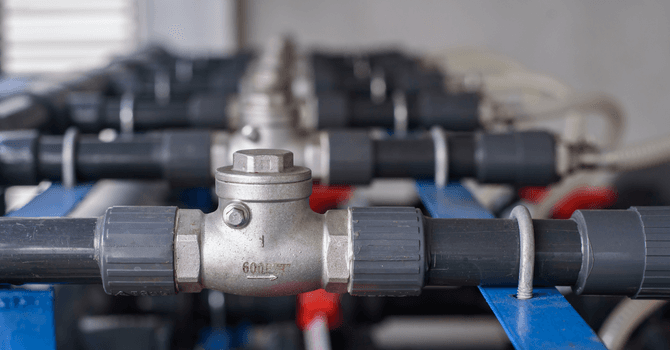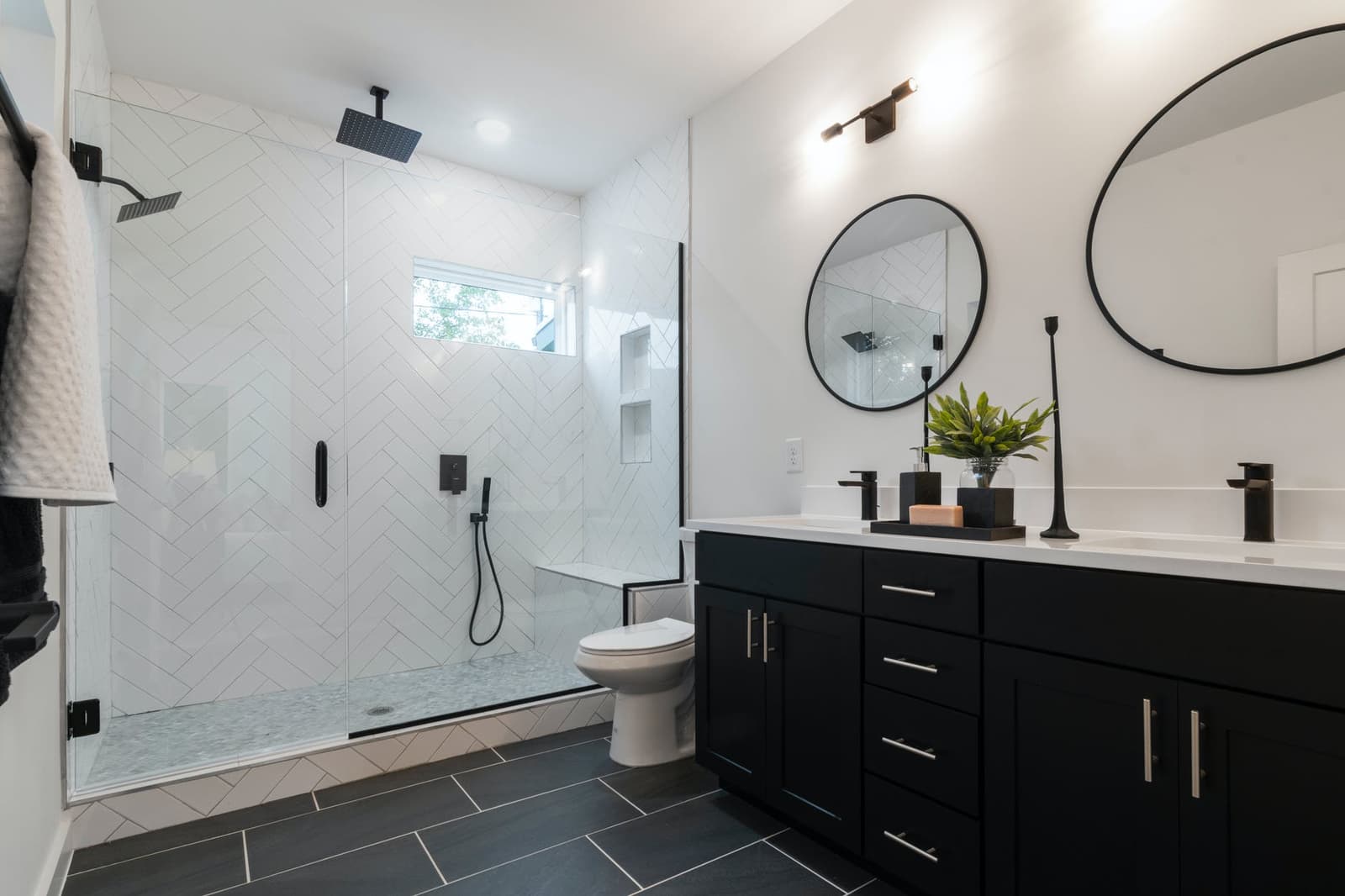
A leaky roof is a serious problem that should be addressed without fail. Yet, one of the most overlooked aspects of roof repairs or construction is actually the most vital element, and you’ve probably never heard of it: the roof ridge cap (or roof ridge).
This essential piece of the roofing structure must be chosen, installed, and maintained with care to prevent any moisture damage to the roofing system. Also, whether you have a steel, zinc, or sheet metal roof, you'll need a ridge cap to ensure that rainwater is properly drained and your roof is leak-proof.
In this article, you’ll learn everything you need to know about the roof ridge, namely the most common types of ridge caps and their respective advantages, how to install cap shingles, and a lot more useful information. So, if you want to know more about the roof ridge, keep scrolling to the end so you don’t miss anything!
Definition of a Roof Ridge

Source : Canva
The ridge is the highest point of a roof’s structure. More precisely, it’s where two roof slopes or rafters meet to form the triangular peak of the structure. As a matter of fact, if you take a second to check out your roof, the ridge will be the horizontal line running along the length of the rooftop, from one end to the other. It can run the entire length of the roof or can be divvied up, depending on the structure’s complexity.
Note that some homeowners confuse hip rafters with the ridge board as both needs to be covered. However, the hip rafters align where the two sides of the roof meet to form the outer vertical angle.
To avoid any confusion, keep in mind that the ridge board is generally horizontally positioned and makes up the highest point of the roof.
It’s also important to note that if your roofing structure is more on the complex side, meaning divided up with a number of sides, you’ll have multiple ridge boards. With all the different sides coming together, the ridge board won’t be horizontally positioned along the entire roof. Every peak will then have its own ridge board where two slopes meet on the roof.
Different Types of Ridge Caps: Features & Advantages
The different types of ridge caps and their respective installation method depend, first and foremost, on the roofing material used. Therefore, the ridge caps used on corrugated roofing won’t be the same used as on slate roofing. Thus, it’s absolutely necessary that the ridge cap installation be carried out by experts in the field.
In Quebec, and throughout Canada, you’ll mostly find the following ridge caps:
Ridge Cap Tiles
For traditional roofing tiles, most often, regular ridge cap tiles (usually made with mortar) will be used. Ridge cap tiles have a rather aesthetic appeal. Also, in terms of advantages:
It gives the house a whole new, aesthetically pleasing look.
It is a rather decent choice for warm and humid climates, since it keeps the house cool. Also, it's considered cost-effective in terms of energy saving (reducing electricity bills) and can be recycled to manufacture new ones.
These are also heat- and wind-resistant, and they protect roofs against fungal growth.
Zinc or Sheet Metal Roofing Ridge Caps
If your roof is covered with sheet metal or zinc, in most cases, zinc or aluminum ridge caps will be used to help enhance the roof’s overall aesthetic appeal. With this type of ridge cap, you’ll get a smooth texture and appearance and, most importantly, great resistance to moisture, harsh weather, and fire.
Such materials used for ridge caps can last up to 100 years, require little maintenance, and are relatively easy to install. As a matter of fact, once the installation’s done, you don’t have to do much else. Note that zinc (or aluminium) ridge caps are also eco-friendly and lightweight.
So, if you’re looking for an Earth-friendly product, look no further! These ridge caps are 100% recyclable and can be endlessly reused to ensure full-leak protection. What more could you ask for? And, on top of that, they’re as easy to install and maintain as roof drip edges.
Slate Ridge Cap
Here, the ridge cap is made with two crisscrossed zinc strips, which straddle the entire ridge board line (tile can also be used).
How to Install Ridge Cap Shingles

Source : Canva
Installing ridge cap shingles is one of the most important steps, and it’s usually the final step of the whole process. So, to help you achieve this crucial step, we thought it would be a good idea to give you a little rundown of how to install the shingles:
Step 1: Make sure that the shingles aren’t too cold; they’re easier to handle when they’re warmed up a bit when it comes to installation purposes.
Step 2: To achieve a straight and professional-looking line (50-50 on either side) without damaging it, fold the material in half.
Step 3: When applying ridge cap shingles, start at the lowest point of the hip rafter and work your way toward the ridge board (top). On hipped roofs, install ridge cap shingles working from each end to meet in the middle. On gable roofs, lay the ridge cap shingles by starting at the far end facing away from the wind and working your way to the other end.
Step 4: Nail the ridge cap shingle roughly 14 cm above the ridge, some 2.5 cm on either side, depending on the type of ridge cap shingle you’re using.
Step 5: Once you’ve worked your way to the top of a gable roof, start with the ridge end in the opposite direction of the wind for optimum ridge wind resistance.
Step 6: Now’s the final step: set the final shingle in cement and cover the exposed nail heads with cement, too. In fact, the final shingle must be glued with plastic cement specifically, and the exposed nails must also be covered.
Ridge Cap Shingle Pricing
To give you an idea of the price range of ridge caps, note that for Glacier Hip & Ridge pre-cut cap shingles, you’ll need to spend roughly $61. These are covered with algae-resistant granules and an adhesive sealant which provides top-notch wind resistance. Each pack contains 21 shingles, divided into three sets for a total of 63 units.
But, typically, the most popular ridge cap shingle prices are as follows:
Ridge cap tiles: $5.40 to $27 per linear metre
Metal ridge cap: $20 to $33.70 per linear metre
Slate ridge cap: $67.50 to $202.50 per linear metre
How do Ridge Vents Work?

Source : Canva
Naturally, your house ought to be able to breathe. The heat generated by the house can build up in the attic, so to avoid any mould issues, humid air has to be released somehow. If left to build up, it’ll cause problems such as the early deterioration of your roof shingles and mould growth, which is potentially harmful to your health, and detrimental to your bank account and your home's structure.
One of the most effective ways to ventilate your home is to employ a proper roof ventilation system. A ridge vent is the most effective solution to remove moisture-laden air from your attic, while also ensuring proper ventilation.
Quickly, a ridge vent is essentially a metal moulding designed and positioned on the roof’s ridge to draw warm air out of your attic and rooftop. Your roof may have more than one ridge, depending on the number of roof slopes and the size of the ridge boards.
So, how does a ridge vent work exactly? The answer to that question is pretty straightforward. Ridge vents function through a natural air exchange process that, when broken down, is a combination of some basic principles you may already know.
When warm air flows into your attic and you have a ridge vent in place, the airflow rising over the roof ridge naturally exchanges the air by allowing the rising warm air to escape through the ridge openings. Those are the small sections on the side of the ridge vent that look like a vent. With this natural air flow occurring, warm air is released through the top vents, naturally amassing cool air to then substitute via soffits. This natural air exchange process then creates negative pressure in the attic, which is also known as the venturi effect.
Should I Install a Ridge Vent On My Roof?
In most cases, the short answer is yes. If you’re building a new roof on your house, your roofing expert will most likely advise you to embed it within your ventilation system. Proper roof ventilation will prolong your roof’s overall durability and will prevent future issues linked to moisture, which result from a build-up of warm air. And for that alone, a ridge vent is a superb option.
Cover image source: Micah Carlson - Unsplash
Get 3 renovation quotes for your roofing project
RenoQuotes.com will put you in contact with 3 reliable contractors for your roofing renovation project. Fill in the form on our homepage (it only takes a few minutes), and you will receive quotes from trusted professionals.
Dial 1-844 828-1588 to speak with one of our customer service representatives.
Looking for something else?
Related articles
The latest industry news, interviews, technologies, and resources.

Editorial Team
•03 Nov 2025
Are you in the middle of building a new house? Are you looking to renovate your roof, but aren’t sure what material to use? Well, what about opting for metal roofing?

Editorial Team
•03 Nov 2025
Is a well-maintained roof really that essential? The answer is yes—it ensures your building’s protection, energy performance, and value. How can you avoid water infiltration or damage caused by frost and sun? What habits can help extend the life of your roof? Exposed to the elements all year long, your roof requires regular maintenance. This guide walks you through the best practices to follow throughout the year.

Editorial Team
•07 Nov 2023
Do you remember that famous old folktale your grandparents would tell you about, the one that probably made it hard for you to comfortably use the toilet without first looking in the bowl, on the off chance that a sewer rat was just wading in there, ready to nip your behind?

Editorial Team
•07 Nov 2023
Radiators are in place to keep the rooms of your home cozy and comfortable. Of course, it can’t be denied that some homeowners may find them to be an eyesore. For this reason, there have been many ways devised to camouflage, cover up or altogether hide the radiator.

Editorial Team
•07 Nov 2023
Many homeowners who wish to renovate their bathroom are currently considering the possibility of opting for a walk-in shower to modernize the space.